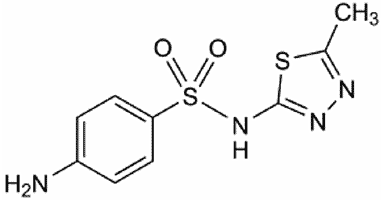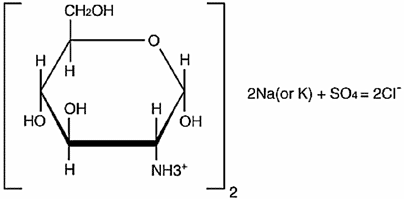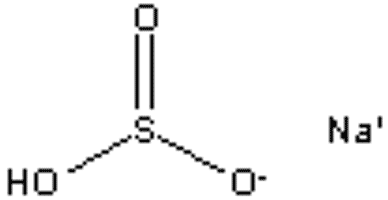กก
|
กก |
|
Differentiating Sulfur Compounds Sulfa Drugs, Glucosamine Sulfate, Sulfur, and Sulfiting Agents BACKGROUNDThere are several misconceptions about sulfur compounds that lead anxiety about using some natural health care substances. A typical worry is that a person who is allergic to sulfa drugs may have problems with substances that contain sulfur. This article is aimed at clarifying the nature of the substances involved. First, sulfur is an element of the earth. This element is essential to life, and is the eighth most prevalent element in the human body. No one is allergic to sulfur itself. Sulfur is not present as an isolated element in the body, but in combination with other elements and, most often, in complex molecules. The primary placement of sulfur in the human body is in the sulfur-containing amino acids: methionine, cysteine, homocysteine (and related cystine, homocystine), and taurine. Disulfide bonds are important to the structural integrity of the connective tissues. Sulfur is a central component of proteins that chelate and remove heavy metals from the body. The benefits of sulfur compounds used in health products is often mentioned. Popular items include alpha-lipoic acid (thiotic acid), methyl-sulfonyl-methane (MSM), allicin (the sulfur compound that is the main active ingredient of garlic), glucosamine sulfate (and its natural polymer, chondroitin), SAMe (S-adenosylmethionine), and several important antioxidants, such as glutathione, N-acetylcysteine (NAC) and dimethyl-sulfoxide (DMSO).
SULFA DRUGSOne of the more common drug allergies is that to sulfa drugs. Sulfa drugs are more appropriately labeled sulfonamides and are derivatives of para-amino benzoic acid. The table below lists common medications that contain a sulfonamide component.
The sulfa drugs are usually not allergenic by themselves, but when a sulfonamide molecule is metabolized in the body, it is capable of attaching to proteins, thus forming a larger molecule that could serve as an allergen. Thus, the allergy is not to the original drug, but to a drug-protein complex. It is estimated that a skin rash occurs in about 3.5% of hospitalized patients receiving sulfonamides, but people with HIV infection seem to have a considerably higher sensitivity to them. A sulfanomide (see sample structure, below) does contain sulfur, but the sulfur atoms are imbedded in a complex molecule. The sulfur atom is not the allergenic agent and being allergic to sulfa drugs does not imply having a propensity to allergy to other sulfur compounds. Rather, it is a unique property of this kind of compound, namely that it can form proteins that are allergenic in some individuals.  GLUCOSAMINE SULFATEGlucosamine sulfate is an amino acid polymer that combines with sodium or potassium (depending on how it is prepared) and with sulfate (SO4). Neither glucosamine, nor sulfate, are allergenic components. Glucosamine sulfate is not known to cause allergy reactions. Glucosamine sulfate is an existing component in the human body, mainly in the connective tissues. When obtained for use in dietary supplements, glucosamine sulfate is commonly derived from shellfish, such as crabs, where it is present as chitin in the shell materials. If it were poorly prepared, persons with shellfish allergy (the allergy is mainly to the muscle portion that is eaten rather than the shell) might have to worry about taking this product. However, purification of the glucosamine sulfate in the standard processing used for dietary supplements makes it safe for virtually everyone with a shellfish allergy problem. Glucosamine sulfate appears helpful as a dietary supplement for nourishing the joints, because it is involved in the production of cartilage and synovial fluid and may help replenish depleted or damaged tissues; it has been shown to have anti-inflammatory properties and may protect against development of atherosclerosis. There is no evidence or reason to believe that those who are sensitive to sulfites (see below) or sulfa drugs are at any elevated risk of sensitivity to glucosamine sulfate, so this commonly used supplement can be enjoyed without worry  SULFITESSulfites (or sulfiting agents) refer to a group of simple chemicals that include sulfur dioxide and sulfite salts. They are produced naturally in some foods, mainly those undergoing fermentation. Sulfites are metabolized to sulfur dioxide under certain conditions that depend on concentration, heat, and pH. Sulfur dioxide has been considered to be the offending component in cases of sulfite hypersensitivity, based on the established sensitivity of asthmatics to inhaled sulfur dioxide. Even so, clinical reports of this sensitivity have involved very few people, and new analytic reports have not appeared in over a decade. This hypersensitivity is often called an allergy, but does not involve immune mechanisms as do reactions that are properly termed allergies. Some sulfiting agents are FDA approved preservatives that are added to food and pharmaceuticals. The more common sulfiting agents are sodium sulfite (Na2SO3), sodium bisulfite (pictured below; NaHSO3), and sodium metabisulfite (Na2S2O3). Examples of foods containing sulfites are listed in the next table; these foods may only contain sulfites under certain conditions. However, the FDA has banned adding sulfites to fresh fruits and vegetables offered in restaurants and other public venues due to the concerns that were raised. Juices squeezed from lemons and limes will not have sulfites, but bottled or dehydrated juice may contain sulfites. 
A sulfite reaction is different from a sulfonamide allergy (a reaction to sulfa drugs) because sulfites and sulfonamides are entirely different chemicals and have unrelated mechanisms of reaction. A person sensitive to sulfites is no more likely to be allergic to sulfonamides than any other individual and vice versa. The following mechanisms of sulfite sensitivity have been proposed:
No antibody or specific complement activity (as would be found in true allergies) has been identified in association with sulfite exposure. Sulfite sensitivity is a matter that is complicated by the fact that it is often reported by persons who display several types of hypersensitivity, so that it is difficult to confirm that sulfites are actually causative factors in perceived reactions. For example, a study of asthmatics who were sensitive to wine indicated that there appeared to be a reduced sensitivity to sulfite-free wine, but that this was likely due to other differences in the wine products, since direct challenge with high-sulfite wine only rarely was associated with a reaction. Reactions to red wines, which appear to occur more often than to white wines, are apparently associated primarily with compounds in the wine other than sulfites. The FDA estimates that about 1% of the population may have some degree of sulfite sensitivity, while that figure rises to 5% of asthmatics, mainly affecting those with severe persistent asthma. Because of concerns about sulfite sensitivity, there is a requirement imposed by the FDA to label packaged foods as having sulfites if they contain as little as 10 ppm. Generally, foods with less than 100 ppm of sulfites will not affect sensitive asthmatics, so there is a ten-fold safety margin. From 1996 through mid-1999, the FDA received a total of only 34 reports (about 10 per year) of adverse reactions allegedly due to eating foods containing undeclared sulfites. FDA specialists in the area of sulfites have not discovered the mechanism that is responsible for the apparent reactions. However, if sulfur dioxide acts in sensitive individuals to cause constriction, this could explain both the asthmatic response and the report that some people suffer headaches. Hospitals may have to consider extra precautions about sulfites used as preservatives in their drugs because people with serious illness may have a heightened degree of sensitivity or more diverse reactions to sulfur dioxide and the drugs may be introduced directly into the blood stream or lungs. Several years ago, a large Western herb company began promoting the idea that Chinese herbs were problematic for those with sulfite sensitivity because many of them were treated with sulfites. Sulfur treatment is sometimes used to prevent herbs from deteriorating, usually by placing the herbs on a screen and having sulfur vapors briefly flow from below the screen, which could leave traces of sulfur dioxide (sulfur prevents the herbs from deteriorating). At the Institute for Traditional Medicine, herb formulations have been provided for nearly 20 years and administered to hundreds of thousands of people seeking Chinese medical health care. Among these people are many who claim to be sulfite sensitive. ITM has not received any reports of sulfite-sensitive patients having evident sulfite reactions to the herb products, despite the fact that some of the herbs are "sulfured". It may well be that there is so little residual sulfur dioxide (and any related compounds) that it doesn't cause a reaction, or it may be that the form of sulfur residue is not one that causes the reactions, or it may be that many of the sensitivities that are described as reactions to sulfites are not actually reactions to sulfites. Nonetheless, some Chinese herb companies have described the items that they provide as "sulfur-free" in response to the concerns that were raised. It is not known whether they routinely use different herb materials in support of those claims. December 2005 APPENDIX 1: Example of Using Sulfur Compounds: Allicin-DMSO SprayA unique formulation with two sulfur ingredients is the result of collaboration between several individuals and organizations. Allicin refers to a highly concentrated extract of garlic, rich in antibiotic and mucolytic compounds (of which the sulfur compound allicin is the main one) that is manufactured in Shanghai, China under strict quality control measures and imported to the U.S. by Dr. Qingcai Zhang. The extract comes in hermetically sealed vials that are used for intravenous applications of the garlic extract. Several clinics have used this imported allicin for respiratory therapy (in a nebulizer), for intestinal infections (by retention enema), and for systemic infections (by IV administration). DMSO is a refined component from trees that has several applications, including antioxidant therapy, though it is especially known for its highly penetrating characteristics: it is used to help carry other substances to areas of the body that are congested or difficult to penetrate. DMSO (dimethyl-sulfoxide) and its derivative compound, MSM (methyl-sulfonyl-methane), are also being used as sulfur donor molecules in treatment of several inflammatory disorders, including arthritis. Dr. Stan Jacobs, at the Oregon Health Sciences University, is the leading expert in use of DMSO and MSM; he had provided the recommendations for use of DMSO for this spray. The combination has now been in use for twelve years, with excellent acceptance and no adverse reports. The DMSO (pharmaceutical grade) and allicin are combined and packaged with a unique nasal sprayer by John Rawson of Flander's Pharmacy in Portland, Oregon. The allicin and DMSO are passed through microfilters to guarantee freedom from micro-organisms. The spray nozzle produces a very fine mist that penetrates the congested areas. Due to the particular characteristics of the spray unit, the glass bottles containing the allicin-DMSO mixture are not full, though they are packed with the correct amount of fluid.
The primary indication for this nasal spray is for helping to alleviate persistent nasal congestion that is due to nasal infections resistant to standard antibiotics or resistant to decongestant therapies; it might also be applied in cases of persisting congestion due to allergies. The spray can be used as needed, up to 6 times per day, with one or two doses (sprays) delivered each time. The allicin component of the formulation may produce a temporary stinging sensation in some users. Both the allicin and DMSO have a garlic-like smell. กก | |||||||||||||||||||||||||||||||||||||||||||||||